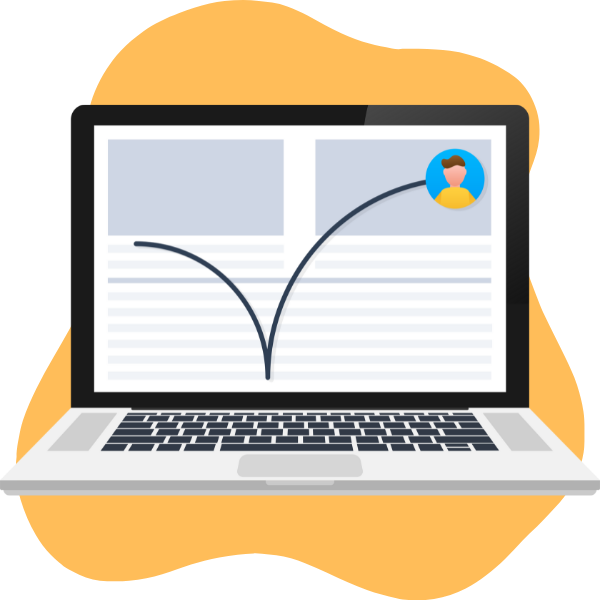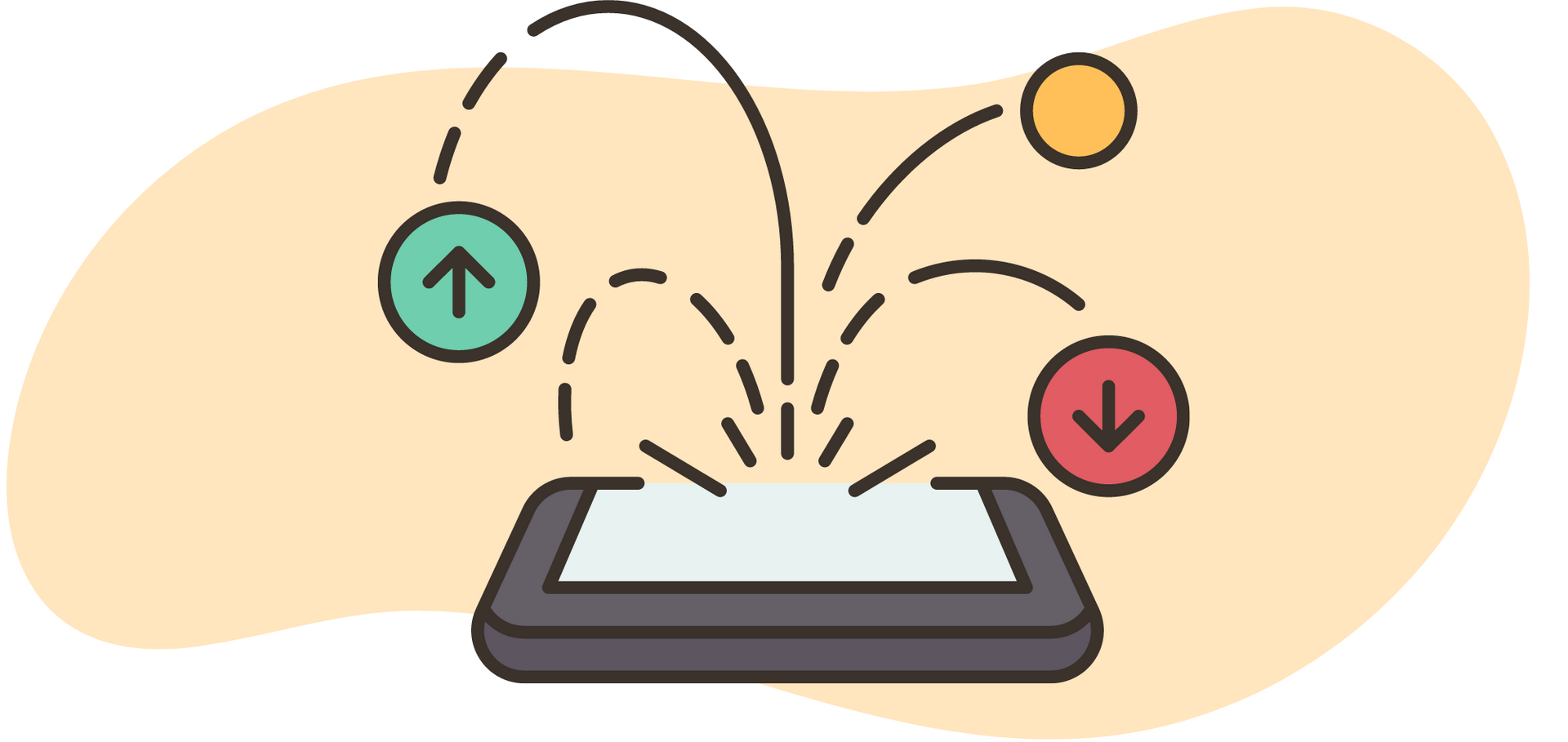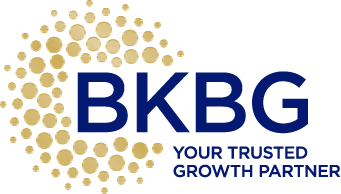Understanding Your Website’s Bounce Rate
The goal of your local business’s website is, above all, to attract customers. After all, you can't share your product or service and you can't generate revenue without customers. The basic concept is pretty simple: 1) the prospective customer lands on your website, 2) they look around and like what they see, 3) they click through to other pages of your site, 4) the prospective customer contacts you.
In an ideal world, each visit to your site would follow this path. But of course, that’s not always the way it happens. When someone visits your website but never clicks beyond the page they landed on, that’s called a bounce.
Here’s how Google defines it: A bounce is a single-page session on your site. In Analytics, a bounce is calculated specifically as a session that triggers only a single request to the Analytics server, such as when a user opens a single page on your site and then exits without triggering any other requests to the Analytics server during that session.
You’ll hear marketers talk about “bounce rate.” That’s simply the rate at which visitors are clicking away from your site after viewing only one page.
Should I Strive for a Low Bounce Rate?
Logic tells us you should work toward a low bounce rate. Naturally, you want your prospective customers to stay on your site longer to increase the chance they’ll contact you. But in some ways, bounce rate can be a quite relative measurement.
For example: If your site visitors never make it beyond your homepage, never click any links or any other pages on your site, you’ll likely have a high bounce rate. But if your homepage is so well designed and the content so expertly crafted that you’re gaining plenty of leads from that single page, the bounce rate doesn’t matter so much.
However, if your site—like the majority of local business websites—relies on visitors clicking beyond just one page, like exploring your service pages or checking your inventory pages, a high bounce rate may be a concern.
What Causes a High Bounce Rate?
Your business website is comprised of many elements—images, copy, navigation, and more—all of which work together to create a user experience. If your site has a high bounce rate, chances are it's the result of a variety of these elements, not just a single issue. Here are a few of the most common reasons your bounce rate may be too high:
Your Site is Too Slow
A slow website will be detrimental to your website’s overall performance. In particular, you'll see this demonstrated in your bounce rate.
If your site is super slow, people will not wait around for the page to load. They’re going to click away to another site. Hence, your increased bounce rate. This is the kind of high bounce rate you should be worried about.
Fortunately, there are some simple steps you can take to speed up your site, like cleaning up the technical aspects of your site design, adjusting your image size and quality, and optimizing your site for mobile devices. Even minor tweaks and adjustments can help speed up your site and thereby, reduce your bounce rate.
Your Page Titles or Descriptions are Misleading
It’s imperative your website's page titles and descriptions are accurate and sufficiently detailed. This may seem obvious, but it’s an issue that happens more often than you might think.
The problem with this is clear – if your site visitor clicks on a page expecting one thing but they find something else, they’re going to click away from your site, increasing your bounce rate.
This is an easy issue to fix. Check each of your site’s pages and compare it to the title and description. Does it match up? Will the site visitor’s expectation match what they actually find on the page? If not, make some corrections.
Poor Design or Low-Quality Content
If your website is clunky, looks outdated, or is otherwise unappealing, you probably already have a high bounce rate. Poor design, bad images, or low-quality content will make it hard of anyone to stick around on your site.
Take a good look at your website from the consumer’s point of view. Ask yourself how long it’s been since your site was updated. Check out some of your competitor's sites.
Don’t be afraid to refresh your website or even rebuild it from the ground up, if that’s what’s needed. If this is outside your skillset or you simply don’t have the time to invest in such a project, call in a team of professionals like Locallogy. We understand what makes websites work - we help our clients address high bounce rates and underperforming webpages.
Understand What Your Bounce Rate Really Means
We mentioned that bounce rate can be a relative measurement. It’s true—a high bounce rate on an otherwise well-performing landing page is probably not a big cause for concern.
But if you're not satisfied with your site's performance, take the time to review your site’s bounce rates and learn what the figures mean. By addressing your website's speed and design, along with its page titles and descriptions, you can effectively reduce bounce rates and improve the overall performance of your site.
Remember, your website's bounce rate is a valuable metric that provides insights into user behavior and presents opportunities for improvement. By implementing the necessary changes, you can enhance the experience for your site visitors and achieve better results for your business.
Get the Latest Content in Your Inbox
Want to be the first to know about new content? Sign up to get our weekly blog posts sent to your email!







